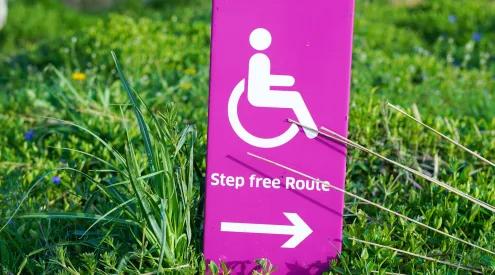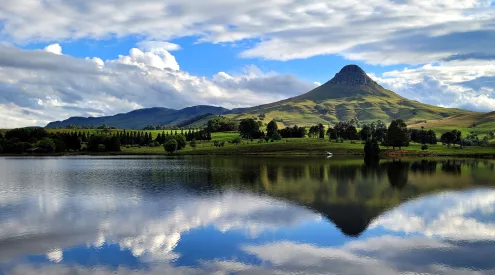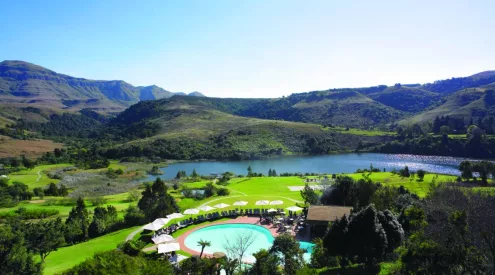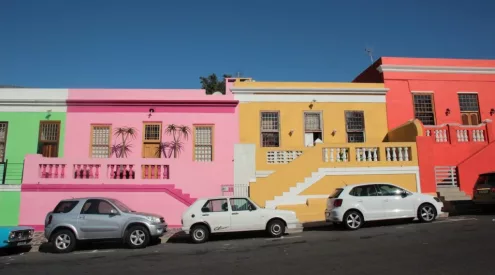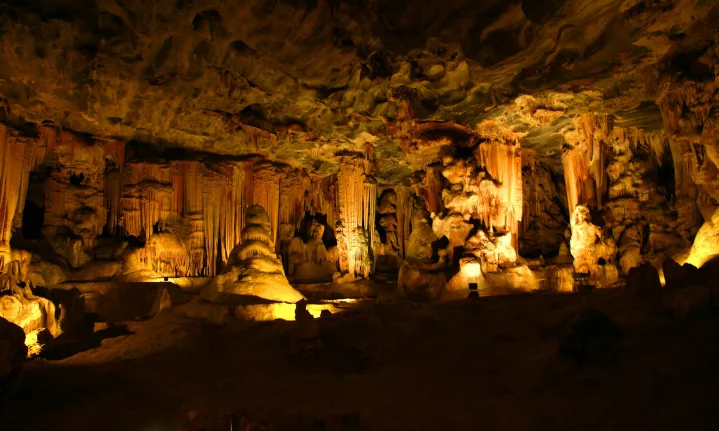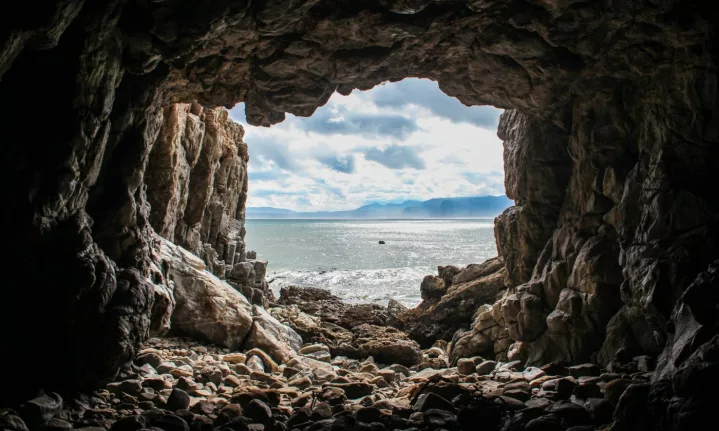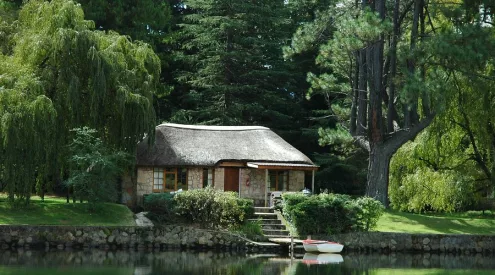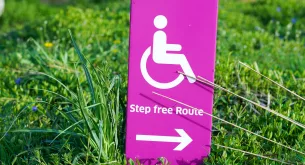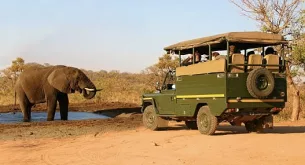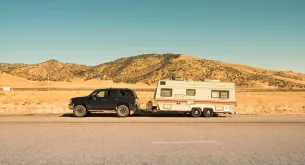While South Africa is famed for its sweeping savannahs, rugged coastlines, and Big Five safaris, few realise the marvels beneath the surface. Beneath the land’s sun-soaked beauty is a shadowy, ancient underworld—carved by time, cloaked in mystery, and rich with stories set in stone
Whether you’re a curious traveller, an adrenaline junkie, or a history lover, the country’s caves have something to offer. From easy, family-friendly excursions to technical caving adventures, here’s your guide to exploring the subterranean side of South Africa.
Caves to consider visiting in South Africa
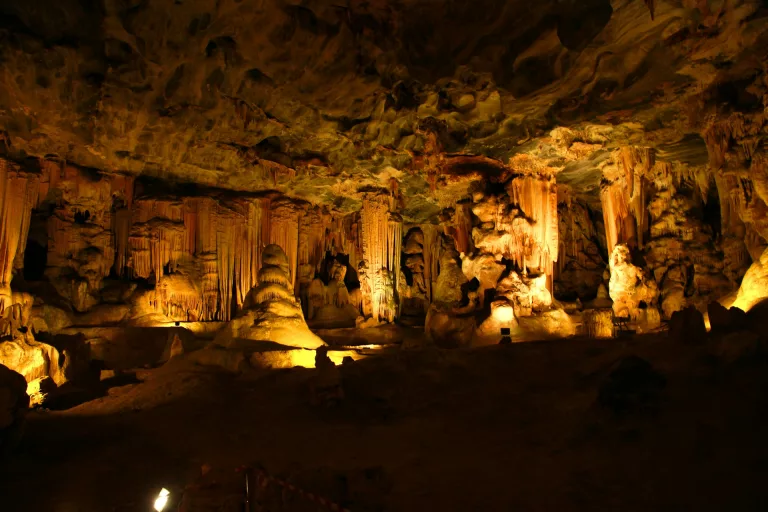
Cango Caves/Dirk Toerien/Unsplash
Cango Caves (Western Cape)
The Cango Caves are South Africa’s oldest tourist attraction, located in the Swartberg Mountains near Oudtshoorn. These limestone caverns are home to soaring stalactites and stalagmites, many named for their dramatic shapes—think “Cleopatra’s Needle” or “The Organ Pipes.” You can choose between a standard walk-through or an adventure tour that involves squeezing through tight tunnels and climbing ladders.
Echo Caves (Limpopo)

Picture/Echo Caves
Located near Ohrigstad, these caves earned their name from the distinctive echo produced by tapping stalactites inside. Some chambers stretch up to 60 metres and are believed to extend further than current exploration has reached. Echo Caves are also rich in cultural history, having served as a refuge for the Pedi during tribal wars.
Sudwala Caves (Mpumalanga)
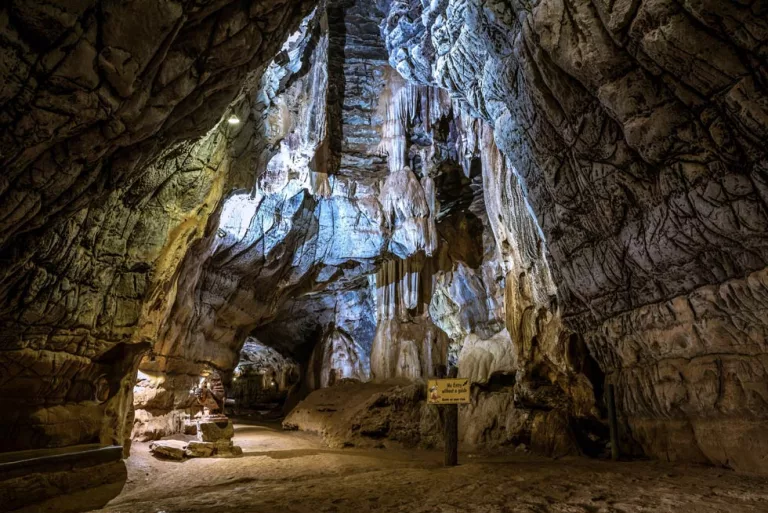
Picture/Sudwala Caves
Sudwala is one of the oldest known cave systems in the world, believed to be over 240 million years old. It offers a variety of tours, including a “Crystal Tour” that leads deep into hidden chambers where ancient crystals glisten. This is a fascinating stop for families and geology buffs, and educational exhibits and dinosaur models are on site.
ALSO READ: Tips for choosing the perfect accommodation for your solo trip
Bothongo Wondercave (Gauteng)

Picture/Bothongo Rhino & Lion Nature Reserve
Tucked within the Bothongo Rhino & Lion Nature Reserve in Gauteng’s Cradle of Humankind—a UNESCO World Heritage Site—the WonderCave is South Africa’s third-largest cave chamber, following the Sudwala and Cango Caves. Its sheer size and location make it a must-see for curious travellers exploring the region’s rich geological and cultural landscape.
Klipgat Cave (Western Cape)
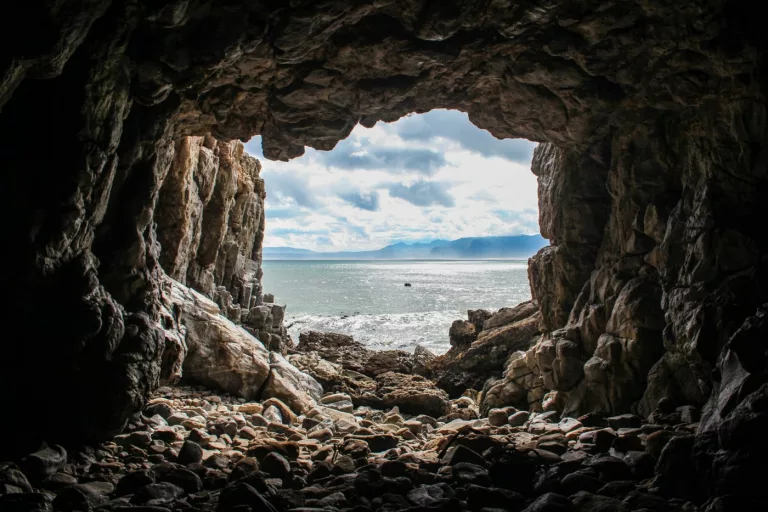
Picture/Secret Cape Town
Perched above the ocean near De Kelders, Klipgat Cave combines natural beauty with archaeological significance. Excavations revealed human remains dating back more than 70,000 years, making it one of the region’s most important Middle Stone Age sites. After exploring the cave, stick around for a sunset picnic or whale watching from the cliffs.
For the Thrill-Seekers
South Africa has caves that push your limits if you’re after raw, less-commercialised adventures. KwaZulu-Natal’s Bats Caves, for example, are a favourite among seasoned cavers for their narrow tunnels, muddy scrambles, and lack of artificial lighting. Many of these “wild caves” require proper gear and experience, so joining a local caving club or booking a guided expedition is highly recommended. The South African Speleological Association (SASA) is a great place to start.
Local legends and lore
South Africa’s caves aren’t just geological marvels but also vessels of folklore and cultural memory. Some caves, like those in the Eastern Cape, are considered sacred by the Xhosa and San communities. Others are wrapped in tales of treasure, ancestral spirits, or ancient rituals. Respecting the cultural significance of these sites adds depth to the adventure.
What to know before you head out
Caving can be physically demanding. Tight spaces, climbing, and scrambling are common, especially on adventure tours. Here’s a quick checklist:
- Helmet with a headlamp
- Non-slip hiking boots
- Lightweight clothing you don’t mind getting dirty
- Water and snacks
- Gloves and knee pads for extreme caving
Always follow safety protocols, especially in less-developed caves, and opt for guided tours unless you’re highly experienced.
Responsible caving
Caves are fragile ecosystems. Many are home to delicate rock formations and bat colonies that can be disrupted by noise or light. Follow “leave-no-trace” principles, avoid touching formations, and stay on designated paths. Supporting community-run or conservation-based tours also ensures your visit contributes positively to local livelihoods and preservation efforts.
Planning your itinerary
Most of South Africa’s caves are open year-round, but some are weather-dependent, particularly in regions prone to flooding during heavy rains. Check accessibility and opening hours in advance. If you’re travelling with family, opt for caves with easy access and guided tours. For thrill-seekers, call ahead to book adventure packages or technical excursions.
Nearby attractions—from national parks to quaint towns—make combining your caving adventure with a broader travel itinerary easy.
Follow us on social media for more travel news, inspiration, and guides. You can also tag us to be featured.
TikTok | Instagram | Facebook | Twitter
ALSO READ: Exploring the rich history of Robben Island beyond Nelson Mandela

